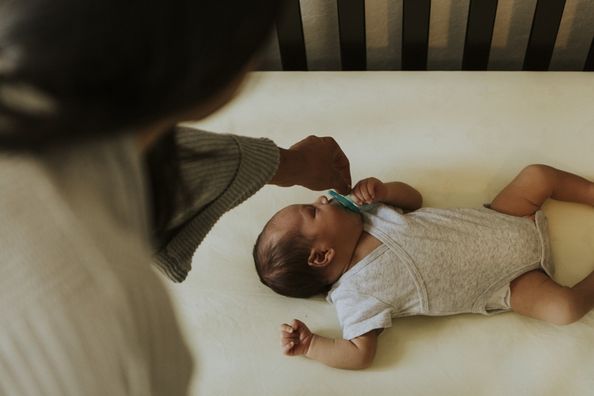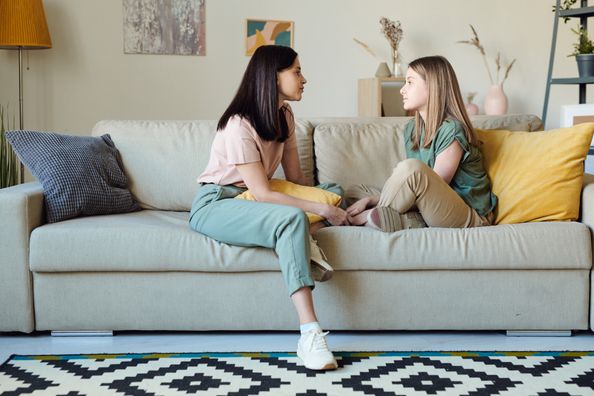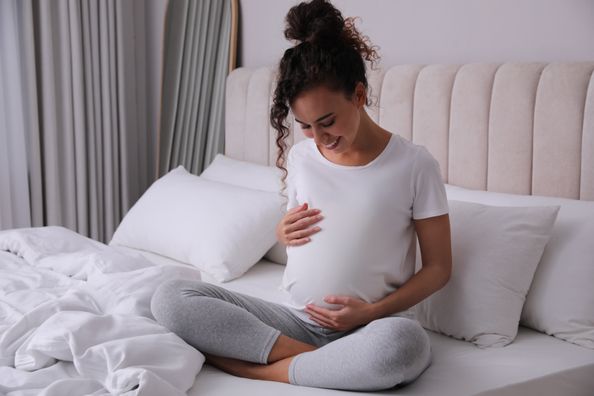Creating a safe sleep environment and developing healthy habits play a vital role in keeping your baby safe. Following the American Academy of Pediatrics’ recommendations can protect against sleep-related risks.
The Risks
All babies under the age of one are at risk for sudden infant death syndrome (SIDS). Although the causes for SIDS are unknown, it is widely accepted that environmental factors could play a role in keeping your baby safe while they are sleeping. Low muscle development impacts your baby’s ability to roll away from objects that could interfere with their breathing. Here’s what you can do to help create a safe sleeping environment for your baby.
Creating a Safe Sleep Environment
Always Place Your Baby on Their Back to Sleep
Place your baby on their back when they are sleeping. Lying on their back on a flat surface, for naps and overnight, keeps their airway clear. As your baby ages, their muscles will become stronger, allowing them to roll from back to front and change positions.
Share a Room with Your Baby
The American Academy of Pediatrics recommends that babies and caregivers sleep in the same room for the first 1 to 12 months. Sleeping in close proximity to your baby allows you to monitor them more easily and reduces the risk of SIDS by as much as 50 percent.
Ensure Your Baby Has His/Her Own Sleeping Space
Your baby having their own crib, bassinet or even the trending baby box given out by select area hospitals, reduces the risk of their airway becoming compromised. The risk of suffocation, strangulation and entrapment is lower when your baby is in their own sleeping space. Please note the use of drop side cribs and solid fluffy bumper pads have been banned in Illinois.
Use a Firm Sleep Surface with a Fitted Sheet
A firm surface, such as a crib mattress (with a fitted sheet) is ideal. To test its firmness, place your baby on the surface and pick him or her up after one minute. If there is a dent or impression left, the surface is not firm enough for sleep. Soft surfaces can increase the chance of your baby rolling over onto their stomach while sleeping. Your baby’s mattress should be flush against the side of the crib to ensure that there are no gaps between the mattress and the crib walls.
Keep Sleeping Area Free From Clutter
The area in which your baby is sleeping in should be kept free from all clutter. Items such as blankets, pillows, sleep wedges, stuffed toys and bumpers may move as your baby rests, which could obstruct your baby’s airway. Many parents swaddle their newborn babies to sooth them and support sleep. Swaddling is a technique where a blanket is used to restrict the movement in a baby’s arms and legs. Many babies are ready to be weaned from being wrapped in a swaddle between three and four months of age. Babies who are able to roll over should not be swaddled.
By taking these precautionary steps, you’ll both get the quality rest that you need. For more tips on children’s health, or to schedule an appointment with a pediatrician, please visit us online at https://staging.dupagemedicalgroup.pkiapps.com/services/pediatrics/.
Health Topics:







